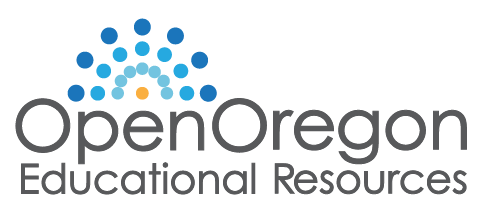Oregon college and university representatives showed up in force for the 2019 Cascadia Open Education Summit. This event was hosted by BC Campus with regional cosponsors Lumen Learning, Open Oregon Educational Resources, and the Washington State Board for Community and Technical Colleges. Open Oregon Educational Resources sponsored 30 attendees. New and experienced OER advocates were offered the opportunity to learn and share effective practices in awareness building, implementation, collaboration, strategy, and research.
Oregonians were represented on the program. Here is a list of the abstracts and presentation materials created by our colleagues:
What Is An Open Ancillary Platform and Why Is It Vital To The Future of OER in Higher Education? Jeff Gayton, Kaitlin Hakanson, Amy Hofer, Genifer Snipes
This will be a panel presentation where members of this group will talk about what they’ve done so far and next steps. Open Oregon has hired a consultant to conduct an environmental scan of existing open and commercial platforms, assess what faculty need from an open platform, investigate the technical requirements of an open platform, and identify funding opportunities for an open platform. The final report will not be complete before the conference, but we should have a good deal of preliminary data. We want this to be an interactive discussion, a way to highlight the urgency of the project, and an opportunity to get more people involved.
Open ancillary products feedback from Cascadia Open Ed Summit, 2019
Student-Centered Design Components in Body Physics: Motion to Metabolism Lawrence (Mick) Davis
The presenter will use Pressbooks as a digital media platform for presenting information. An internally linked Unit named “Cascadia OE Summit” will be added to the OER textbook being presented and the chapters in that unit will play the role of traditional “slides.” This method will allow fluid transition between general presentation information and specific examples from the book itself, while also demonstrating the web-view features of the Pressbooks platform and allowing attendees to follow along on their own web-capable devices. Real-time polling will be used to engage the audience, receive feedback on the textbook design, and improve alignment of the presentation content with the demographics and learning desires of the audience.
Body Physics: Motion to Metabolism – Cascadia OER Summit 2019
Implementing an OER at Scale with Synchronized Print and Online Components Using Open, Collaborative Technologies
Alex Jordan & Ann Cary
This session will share the challenges and experiences of seven faculty who co-authored and self-published an OER package (print, eBook, online homework, ancillaries) for a year-long basic algebra sequence at a school with 150 math instructors and 9000 basic algebra students annually. We will also showcase features of that OER package that arise from the authoring software PreTeXt, including a dynamic, interactive, accessible, and portable eBook, a synchronized print edition, and synchronized online homework. Our challenges included development funding, collaboration logistics, version control, an evolving curriculum, licensing, print logistics, and synchronizing the demands of eBook, print, and online homework. We will share the solutions we settled on which may be of use to others in similar endeavors. Participants will be introduced to and guided through an exploration of the interactive components of the eBook and online homework, which can be accessed on any mobile device or laptop.
Presentation slides
What we learned: Faculty motivation, perceptions, usage, and institutional support of OER correlated with student success data
Jaquelyn Ray & Jennifer Lantrip
The intent of our presentation is to share the findings of a research study we conducted to examine factors that seem essential to successful OER implementation: faculty motivation, student perceptions, and level of institutional support. Making a difference is key to our work with OER. It motivates faculty to embrace the challenges and opportunities that come with OER implementation and it can attract positive attention from administrators who can cite innovations being made that reduce student costs. Our survey findings were compared against student success data in pre/post OER adoptions to learn what correlations (if any) may exist between these “essential” factors for OER implementation and student success. We will include a real-time poll asking the audience to consider aspects of their institutional climate and how this might relate to both OER advocacy and implementation and student success. Our research study applied three three elements of the Open Education Group’s COUP framework (outcomes, usage, and perceptions). Community college faculty across Oregon were surveyed to identity their motivations for moving to OER, barriers they faced, pedagogical changes they made, the importance of institutional support, and student perceptions. Considering all these facets, we then measured the student success data across pre/post OER adoptions. Did motivation, perception, and institutional support correlate with higher rates of student success? What were the key things that mattered to our faculty? Come find out! We’ll share perspectives from across institutions and the results of our student success data.
Presentation slides
